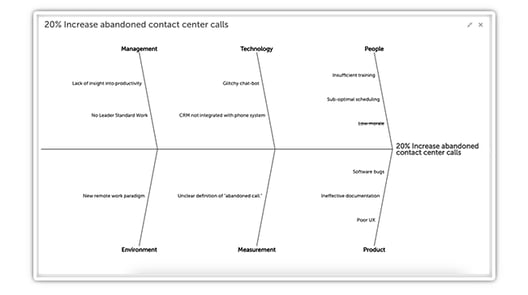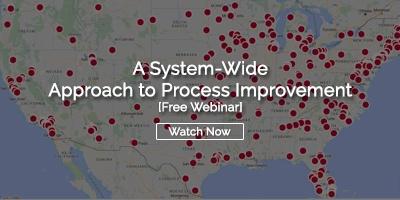 Business processes serve as the backbone of an organization, defining how tasks are executed, resources are allocated, and goals are achieved. In this dynamic and competitive landscape, embracing continuous improvement through effective process improvement plans is paramount.
Business processes serve as the backbone of an organization, defining how tasks are executed, resources are allocated, and goals are achieved. In this dynamic and competitive landscape, embracing continuous improvement through effective process improvement plans is paramount.
Why create a process improvement plan?
Process improvement refers to the systematic and deliberate effort of identifying, analyzing, and enhancing the various steps, methods, and interactions that constitute a business process. The primary goal of process improvement is to eliminate inefficiencies, reduce errors, increase productivity, and ultimately enhance an organization's overall performance and achieve strategic goals. Process improvement is not a one-time endeavor. It is a cornerstone of the continuous improvement philosophy that encourages organizations to strive for excellence in every aspect of their operations.
Process improvement projects systematically identify opportunities for improvement, including bottlenecks, errors, inefficiencies, and areas for enhancement within existing workflows. Organizations can streamline operations, enhance productivity, and deliver higher-quality products or services by meticulously analyzing each step and involving stakeholders to do so.
The benefits of internal process improvement are substantiated by a wealth of statistics highlighting its positive impact on organizational performance and efficiency. According to a study by the American Productivity & Quality Center (APQC), organizations that prioritize process improvement plans experience an average cost savings of 20% to 30% and a significant reduction in errors and defects. Additionally, a survey conducted by McKinsey found that companies that adopt process improvement methodologies often see a 10% to 40% increase in productivity.
Organizations attempting process improvement often encounter several challenges that can impede the successful implementation of their initiatives. One common challenge is resistance to change among employees. Employees might be accustomed to existing processes and hesitant or unwilling to adopt new methodologies, causing friction and hindering progress. They might also, unfortunately, experience punishment when attempts to improve don't go perfectly, which teaches them to be very cautious about change.
Additionally, a lack of buy-in from leadership and insufficient communication can undermine the incremental improvement efforts, as precise alignment around business goals and support from top management is crucial for helping the team succeed.
Organizations must foster a culture of collaboration, communication, and adaptability to overcome these challenges. Engaging employees, securing leadership support, investing in necessary resources, and carefully managing change are essential to successful process improvement efforts.
How to create a process improvement plan
Creating a process improvement plan involves a systematic approach to enhancing operational efficiency and quality.
- Begin by identifying areas within the current workflow that warrant improvement and evaluating where process changes could yield significant benefits.
- Formulate a well-defined process improvement plan that outlines specific goals, key performance indicators, and the methods employed.
- Embrace the principle of continuous improvement, where the plan is viewed as a dynamic framework that evolves in response to changing circumstances.
- Implement the improved process while carefully monitoring its impact on performance metrics.
- Regularly assess progress, seek feedback from stakeholders, and adjust the plan as necessary to ensure sustained success in optimizing processes and capitalizing on identified opportunities for enhancement.
Methods for Identifying Opportunities
Process improvement is dependent on identifying opportunities to implement positive change. Here are some proven effective methods for doing so.
Understanding Your Processes Through Mapping
Different process mapping techniques are valuable tools for visualizing and analyzing organizational workflows. Each technique offers unique advantages and is best suited for specific scenarios. Two of the most widely used are:
Flowcharts: Flowcharts provide a visual representation of a process using shapes and arrows. They depict the sequence of steps, decisions, and interactions within a process. Flowcharts are excellent for illustrating detailed processes, identifying bottlenecks, and understanding the logic of complex workflows. Use flowcharts when you need a clear overview of a process's sequential steps and decision points.
Value Stream Mapping (VSM): Value stream mapping is focused on capturing and analyzing the high-level flow of materials, information, and value within an entire process, or "value stream." It encompasses the entire value chain, from raw materials to the end customer. VSM aims to identify waste, inefficiencies, and opportunities for improvement. It is ideal for visualizing the entire process from a holistic perspective and is often used in the Lean methodology. Value stream mapping is especially useful when seeking to optimize the entire value delivery process and reduce overall cycle times to the customer.
Identifying Areas for Improvement
Root cause analysis methodologies are essential tools for identifying the underlying reasons behind problems or issues within processes, systems, or organizations.
Fishbone Diagram (Ishikawa or Cause-and-Effect Diagram): The Fishbone diagram visually represents the potential causes of a problem in a branching structure resembling the skeleton of a fish. Categories such as People, Process, Equipment, Environment, and Materials are used to organize possible causes. The Fishbone diagram is particularly effective in group discussions and collaborative problem-solving sessions.

5 Whys: The 5 Whys technique involves repeatedly asking "why" to dig deeper into the causes of a problem; by asking "why" multiple times (usually, but not always, about five times), you can uncover the successive layers of causation leading to the root cause. This approach is simple and easy to apply, helping to reveal both evident and underlying issues.
Prioritizing Areas of Improvement
Ranking improvement opportunities based on potential benefits and required resources is a crucial step for effective decision-making within an organization. Here's a systematic approach to achieve this:
Define Criteria: Establish clear criteria for evaluating and ranking improvement opportunities. Criteria could include potential financial benefits, alignment with business goals, impact on customer satisfaction, feasibility of implementation, and resource requirements.
Assess Potential Benefits: Evaluate each improvement opportunity's potential benefits. Consider factors like increased revenue, cost savings, enhanced efficiency, and improved customer experience. Assign scores or values to quantify these benefits.
Estimate Resource Requirements: Determine the resources needed for each improvement opportunity, including human resources, time, technology, and capital investment. This could involve estimating costs, staffing, training, and any other necessary inputs.
Conclusion
A systematic and data-driven approach is the bedrock of successful process improvement. It provides a structured path for identifying opportunities, exploring potential solutions, making decisions, measuring progress, and fostering collaboration. Organizations elevate their chances of achieving lasting, impactful, and sustainable change by grounding improvements in evidence and systematically aligning efforts with objectives.




Add a Comment